NICO Distinguished Speaker Series
Past Speakers
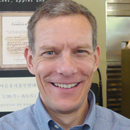
Matthew Jackson, Stanford University | Gossip: Identifying Central Nodes in a Social Network
May 29, 2014
Jacobs Center, Northwestern University
Abstract
How can we identify the most influential nodes in a network for initiating diffusion? Are people able to easily identify those people in their communities who are best at spreading information, and if so, How? Using theory and recent data, we will examine these questions and see how the structure of social networks affects information transmission ranging from gossip to the diffusion of new products. In particular, a model of diffusion is used to define centrality and shown to nest degree centrality, eigenvector centrality, and other measures of centrality as extreme special cases. Then it will be shown that by tracking gossip within a network, nodes can easily learn to rank the centrality of other nodes without knowing anything about the network itself. The theoretical predictions are consistent with data from rural India.
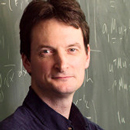
Mark Newman, University of Michigan | Large-Scale Structure In Networks
March 12, 2014
Chambers Hall, Northwestern University
Abstract
Networks are of broad interest in biology, physics, engineering, and many other areas for the light they shed on the shape and function of complex systems. This talk will focus on the large-scale structure of networked systems -- what do they look like when you stand back and take in the whole network? This is a difficult question to answer because in most cases the networks we study are too large and complicated to allow us to actually make a picture of them. Two promising classes of methods for understanding structure are spectral methods and inference methods. This talk will give an introduction to both using simple examples, and then discuss some beautiful recent results that link the two together and reveal some deep and unexpected truths about what networks can tell us and what they can't.
Biography
Mark Newman received a Ph.D. in theoretical physics from the University of Oxford in 1991 and conducted postdoctoral research at Cornell University before accepting a position at the Santa Fe Institute. In 2002 he left Santa Fe for the University of Michigan, where he is currently the Paul A. M. Dirac Professor of Physics and a professor in the university's Center for the Study of Complex Systems. Professor Newman is a Fellow of the American Physical Society and the author of seven books, including "Networks", an introduction to the field of network theory, and "The Atlas of the Real World", a popular book on cartography. His research centers on social and information networks.
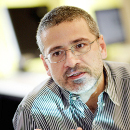
Alessandro Vespignani, Northeastern University | Modeling and forecast of socio-technical systems in the data-science age
October 11, 2012
James Allen Center, Northwestern University
Abstract
In recent years the increasing availability of computer power and informatics tools has enabled the gathering of reliable data that quantifies the complexity of socio-technical systems. Data-driven computational models have emerged as appropriate tools to tackle the study of contagion and diffusion processes as diverse as epidemic outbreaks, information spreading and Internet packet routing. These models aim at providing a rationale for understanding the emerging tipping points and nonlinear properties that often underpin the most interesting characteristics of socio-technical systems. Here I review some of the recent progress in modelling contagion and epidemic processes that integrates the complex features and heterogeneities of real-world systems.
Bio
Alessandro Vespignani is Sternberg Distinguished Professor at Northeastern University in Boston, where he leads the Laboratory for the Modeling of Biological and Socio-technical Systems. He is fellow of the American Physical Society, member of the Academy of Europe, and fellow of the Institute for Quantitative Social Sciences at Harvard University. He is also serving in the board/leadership of a variety of journals and the Institute for Scientific Interchange Foundation. He is focusing his research activity in modeling diffusion phenomena in complex systems, including data-driven computational approaches to the spread of infectious diseases.
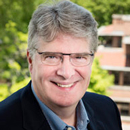
Ronald Burt, Univeristy of Chicago | Second-Hand Brokerage
February 15, 2007
James Allen Center, Northwestern University
Abstract
This chapter is about a surprisingly local nature to social capital. The social capital of brokerage is evident from higher compensation, more positive recognition, and broader responsibility given to people who coordinate across the structural holes in a network. The evident benefits raise a question about distribution: How much benefit comes to people who merely affiliate with people rich in access to structural holes? I make a broad, initial distinction in this analysis between direct versus indirect contacts. Information moved between direct contacts I discuss as direct brokerage, to distinguish it from information moved between friends of friends - people to whom one is only connected indirectly - which I discuss as second-hand brokerage. I estimate returns to brokerage in four study populations: the Asian product-launch network in a large software company, the network of supply-chain managers in a large American electronics company, and the networks of investment bankers and analysts in a large American financial organization. These are diverse populations, but in all four, I find that second-hand brokerage has little or no value. Brokerage benefits are dramatically concentrated in the immediate network around a person. Why that is so, and conditions under which it is more or less so, are the subjects of the chapter. The implication for research design is that brokerage can be measured using designs in which data are limited to the immediate network around an individual. The theory implication, with immediate relevance to navigation in small worlds, is that the social capital of brokerage is a local phenomenon as in the Austrian market metaphor with its emphasis on tacit knowledge about local norms and practice.
Bio
Ronald Burt studies the ways that social networks create competitive advantage in careers, organizations, and markets (see research tab on personal website for downloads). Burt joined the Chicago Booth faculty in 1993. He spent the last several years teaching in our Executive M.B.A. program and in Chicago programs for senior executives. When commenting on the difference in environments at various institutions, he described Chicago as a place where "the risk of new ideas is higher than anywhere else because you are continually exposed to confrontation and contradiction between ideas. Most other places protect you from that." Originally a pre-med major, Burt wanted to better explain people's behavior. He went into physiological psychology, then social psychology, finally finishing his doctorate under mathematical sociologist James Coleman here at Chicago. He earned a bachelor's degree in social and behavioral science from Johns Hopkins University in 1971 and a PhD in sociology from the University of Chicago in 1977. He sought a better understanding of European business by spending two years as the Shell Professor of Human Resources at INSEAD, and came to better understand practical applications of his research by spending two years as the Vice President of Strategic Learning at Raytheon Company.
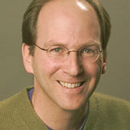
Steven H. Strogatz, Cornell University | Sync: The Emerging Science of Spontaneous Order
October 9, 2006
James Allen Center, Northwestern University
Abstract
What caused hundreds of Japanese children to fall into seizures while watching an episode of the cartoon show Pokemon? Why do women roommates sometimes find that their menstrual periods occur in sync?
The tendency to synchronize is one of the most mysterious and pervasive drives in all of nature. Every night along the tidal rivers of Malaysia, thousands of fireflies flash in silent, hypnotic unison; the moon spins in perfect resonance with its orbit around the Earth; the intense coherence of a laser comes from trillions of atoms pulsing together. All these astonishing feats of synchrony occur spontaneously -- almost as if the universe had an overwhelming desire for order. On the surface, these phenomena might seem unrelated. After all, the forces that synchronize fireflies have nothing to do with those in a laser. But at a deeper level, they are all connected by the same mathematical theme: self-organization, the spontaneous emergence of order out of chaos.
Bio
I have broad interests in applied mathematics. At the beginning of my career I was fascinated by mathematical biology and worked on a variety of problems, including the geometry of supercoiled DNA, the dynamics of the human sleep-wake cycle, the topology of three-dimensional chemical waves, and the collective behavior of biological oscillators, such as swarms of synchronously flashing fireflies. In the 1990’s, my work focused on nonlinear dynamics and chaos applied to physics, engineering, and biology. Several of these projects dealt with coupled oscillators, such as lasers, superconducting Josephson junctions, and crickets that chirp in unison. In each case, the research involved close collaborations with experimentalists. I also love branching out into new areas, often with students taking the lead. In the past few years, this has led us into such topics as: mathematical explorations of the small-world phenomenon in social networks (popularly known as “six degrees of separation”) and its generalization to other complex networks in nature and technology, the role of crowd synchronization in the wobbling of London’s Millennium Bridge on its opening day, and the dynamics of structural balance in social systems.

